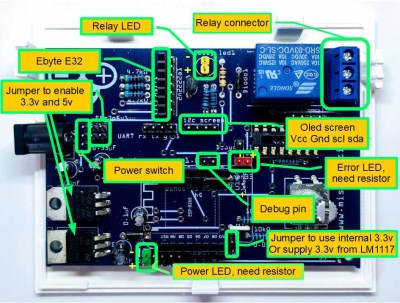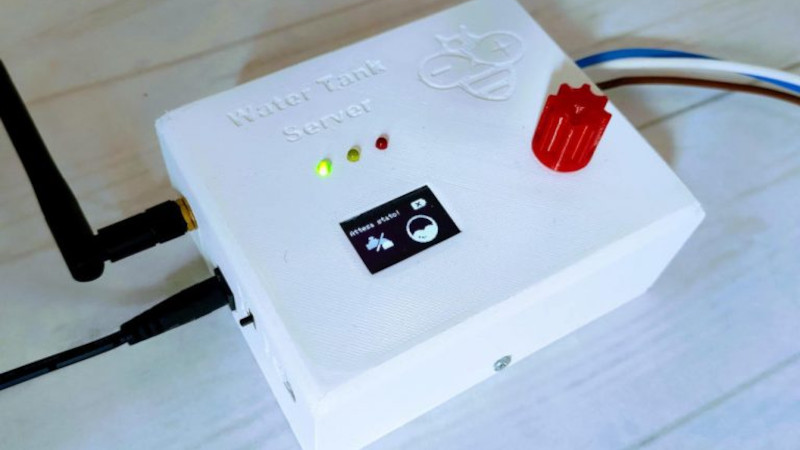[Renzo Mischianti]’s friend has to keep a water tank topped up. Problem is, the tank itself is 1.5 km away, so its water level isn’t typically known. There’s no electricity available there either — whichever monitoring solution is to be used, it has to be low-power and self-sufficient. To help with that, [Renzo] is working on a self-contained automation project, with a solar-powered sensor that communicates over LoRa, and a controller that receives the water level readings and powers the water pump when needed.
 [Renzo] makes sure to prototype every part using shields and modules before committing to a design, and has already wrote and tested code for both the sensor and the controller, as well as created the PCBs. He’s also making sure to document everything as he goes – in fact, there’s whole seven blog posts on this project, covering the already completed software, PCB and 3D design stages of this project.
[Renzo] makes sure to prototype every part using shields and modules before committing to a design, and has already wrote and tested code for both the sensor and the controller, as well as created the PCBs. He’s also making sure to document everything as he goes – in fact, there’s whole seven blog posts on this project, covering the already completed software, PCB and 3D design stages of this project.
These worklogs have plenty of explanations and pictures, and [Renzo] shows a variety of different manufacturing techniques and tricks for beginners along the way. The last blog post on 3D designing and printing the sensor enclosure was recently released, and that likely means we’ll soon see a post about this system being installed and tested!
[Renzo] has been in the “intricately documented worklogs” business for a while. We’ve covered his 3D printed PCB mill and DIY soldermask process before, and recently he was seen adding a web interface to a 3D printer missing one. As for LoRa, there’s plenty of sensors you can build – be it mailbox sensors, burglar alarms, or handheld messengers; and now you have one more project to draw inspiration and knowledge from. [Renzo] has previously done a LoRa tutorial to get you started, and we’ve made one about LoRaWAN!
















so no power ? but there is a pump to fill the tank ? pumps require power.
Hi,
the client that checks the level uses a battery and solar panel, and the server has a relay to activate a pump and needs the power.
Bye
I had the same question so I clicked the link, turns out there’s a diagram at the top of each post: https://www.mischianti.org/2022/05/03/lora-remote-water-tank-level-and-pump-controller-rewal-intro-1/ It shows the pump physically located next to a house and the water tank up a hill a ways. I’d imagine power for the house is an already solved problem.
If a pipe runs to the house, I’d be having “interesting” ideas like how to characterise the water level in the tank with an ultrasound pulse or something.
Didn’t realise the pump was remote also, as I was wondering what was wrong with a float switch setup.
Seems like sensing head pressure down at the house might give a pretty fair indication of water level, at least when the pump isn’t running. Maybe a separate, small diameter line running back to the house to sense head pressure would suffice to keep all of the active parts of the system near the power source.
Even if the same pipe carries water to and from the tank, there are several tried-and-true ways to deal with pump pressure – the most common is probably the hysteresis used with small well pumps co-located with bladder tanks.
Could just measure the pressure at the house…
… though I must confess I like the level sensing approach: more precise and easier to calibrate :)
This device just sense water level or turned on water motor when the level of the water become low ? check out